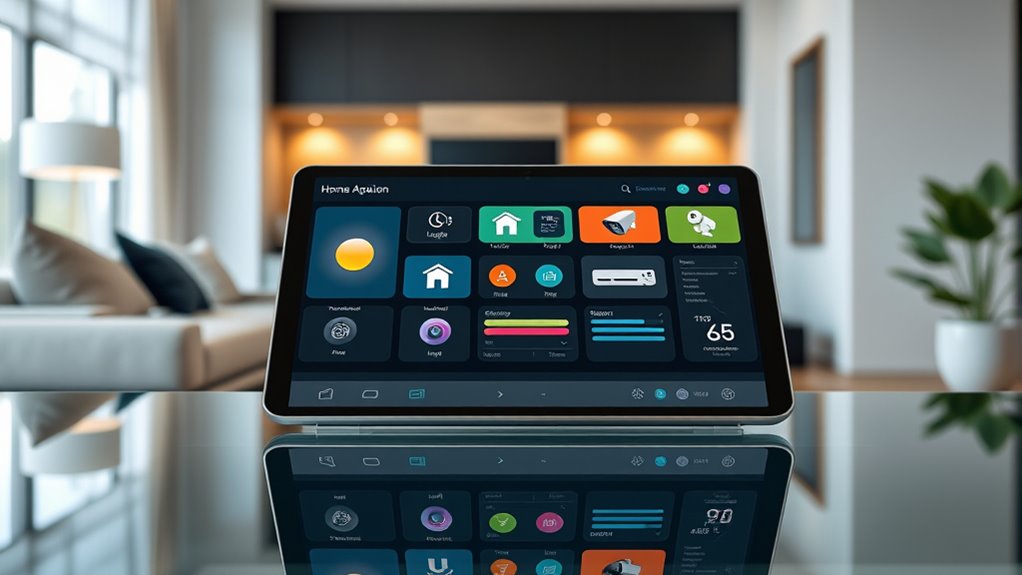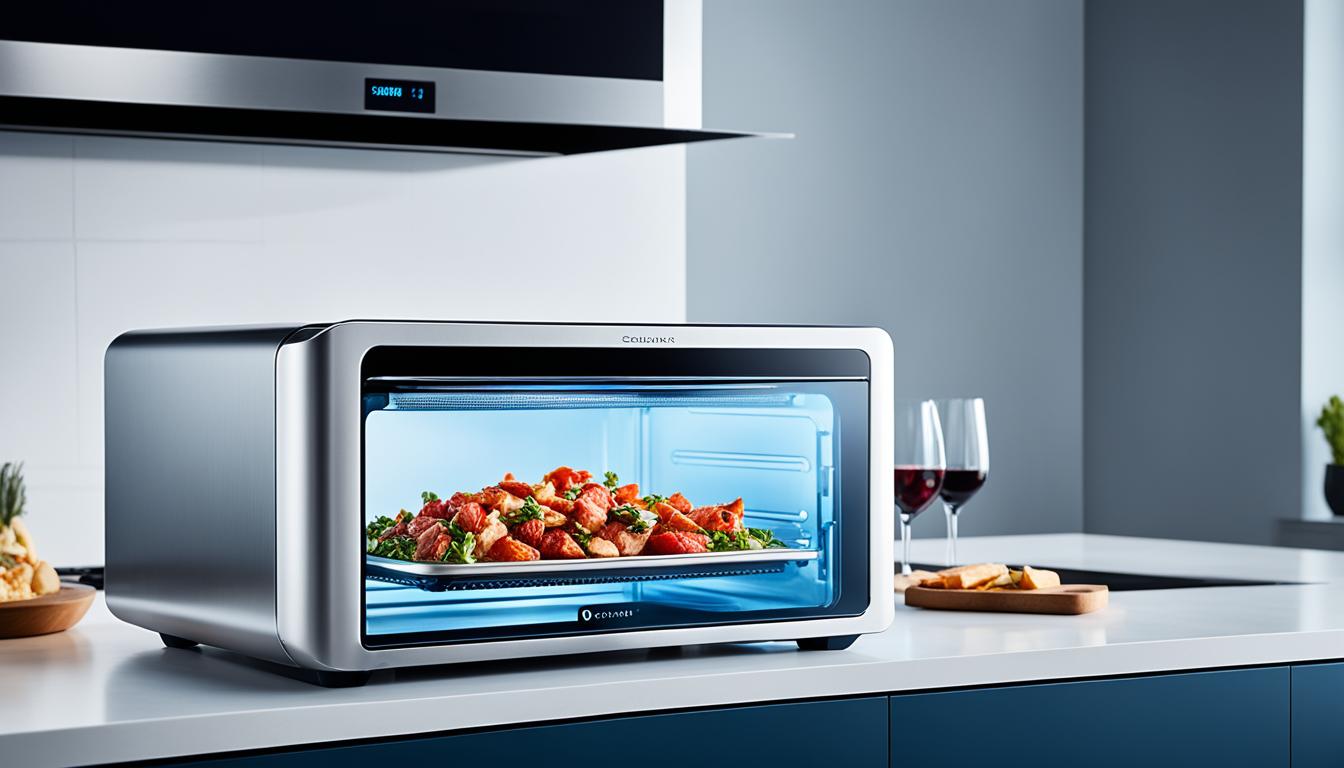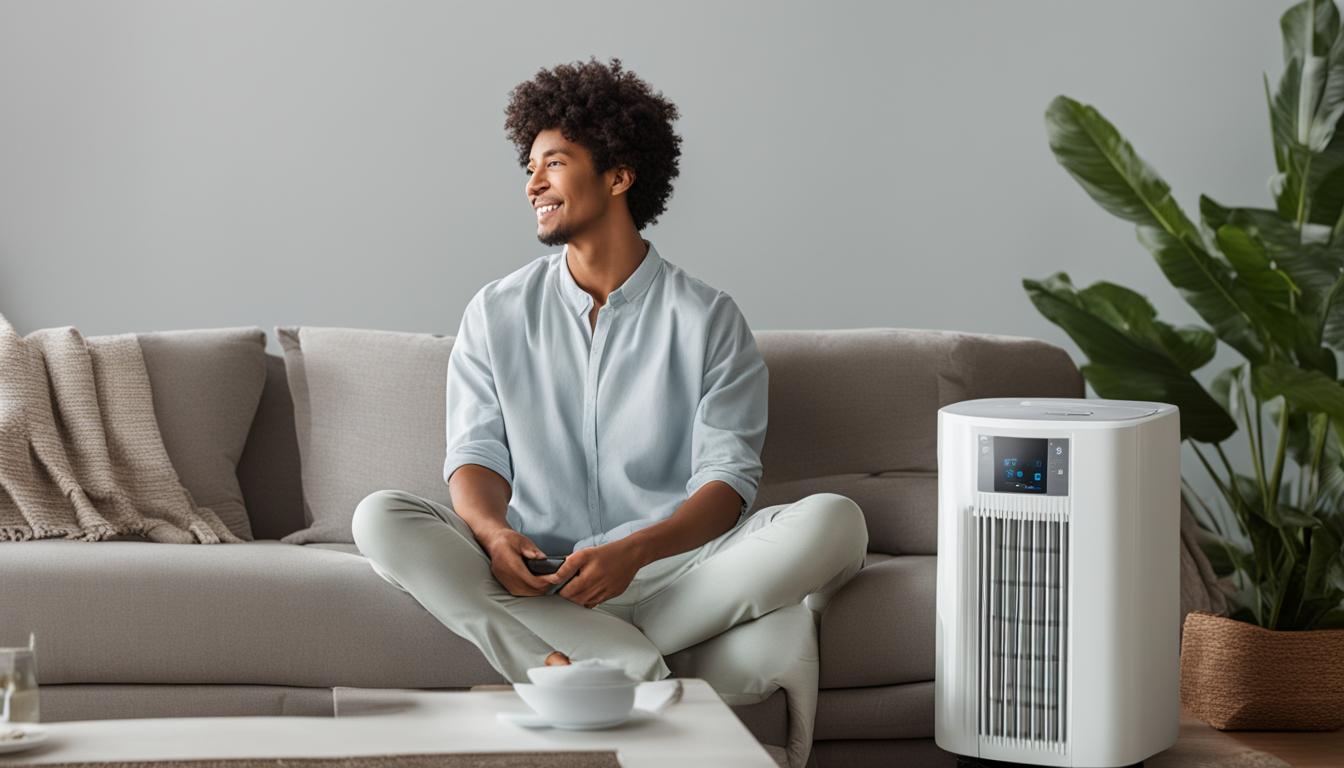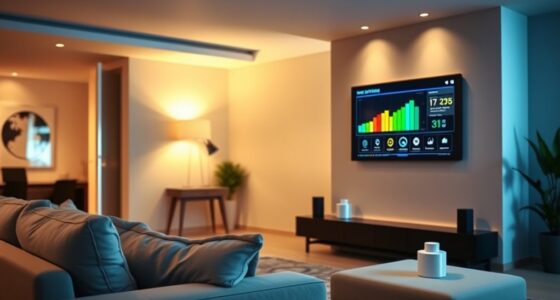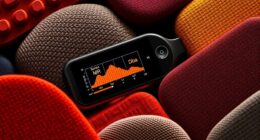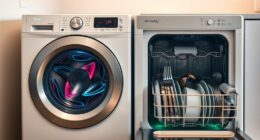To build a home automation dashboard for appliance status, start by choosing compatible smart devices that support real-time monitoring and voice control. Integrate these into a centralized interface that prioritizes your frequently used appliances and provides clear visual cues like color icons and progress bars. Incorporate energy monitoring features to track usage and identify inefficiencies. Organize automation routines to maximize efficiency and comfort; exploring these elements further will help you create an effective, user-friendly system.
Key Takeaways
- Select compatible smart appliances that support real-time status updates and integrate seamlessly with the dashboard.
- Design an intuitive interface with visual cues like icons and progress bars for quick appliance status checks.
- Incorporate voice control features for hands-free status monitoring and device management.
- Implement energy monitoring tools to display real-time consumption and alerts for unusual activity.
- Automate routines based on appliance status, energy usage, or user commands to enhance efficiency and convenience.
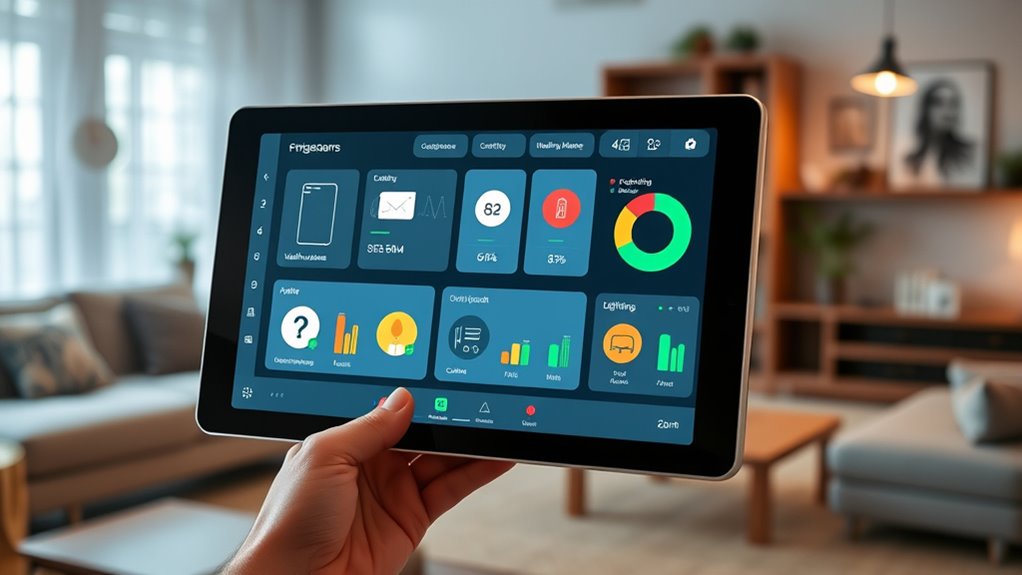
A home automation dashboard serves as the central control panel that simplifies managing all your smart devices. When you set up your dashboard, you want it to be intuitive and responsive, giving you real-time insights into your appliances and systems. One of the key features you’ll find valuable is voice control. With voice commands, you can effortlessly check the status of your appliances or turn devices on and off without lifting a finger. Just say the word, and your smart home responds instantly, making it easy to stay connected even when your hands are full. Whether you want to verify if the washing machine is done or dim the lights, voice control makes managing your appliances seamless and hands-free.
Another essential aspect of building an effective dashboard is energy monitoring. This feature allows you to keep track of your energy consumption in real time. When you can see which devices are using the most power, you’re empowered to make smarter decisions about your energy use. For example, you might notice that your smart oven is consuming more energy than expected, prompting you to adjust its usage or schedule it during off-peak hours. Energy monitoring helps you identify inefficiencies, reduce your utility bills, and contribute to a greener environment. It also enables you to set alerts for unusual activity, like a device that’s unexpectedly consuming excessive power, so you can troubleshoot issues before they escalate.
Energy monitoring tracks real-time consumption, helping reduce bills, identify inefficiencies, and set alerts for unusual device activity.
Integrating voice control and energy monitoring into your dashboard requires a bit of planning. Start by selecting compatible smart devices that support these features. Many popular brands now offer voice-activated appliances and energy monitoring capabilities that can easily sync with your dashboard. Once connected, organize your interface to prioritize frequently used appliances and relevant data points, like current power usage or device status. Use visual cues, such as color-coded icons or progress bars, to make it easy to interpret information at a glance. Additionally, consider Tuning your devices for optimal performance, which can further improve efficiency and responsiveness.
In addition, consider customization options that allow you to set routines or automations based on energy consumption patterns or voice commands. For instance, you can create a routine that turns off all lights and appliances when you leave the house, saving energy and reducing costs. With a well-designed dashboard that leverages voice control and energy monitoring, you gain better control over your home’s appliances, making your living space smarter, more efficient, and easier to manage. This setup not only simplifies day-to-day tasks but also enhances your overall comfort and sustainability.
Frequently Asked Questions
How Secure Is the Home Automation Dashboard From Cyber Threats?
Your home automation dashboard’s security largely depends on the encryption protocols and user authentication you implement. Strong encryption keeps your data safe from cyber threats, while robust user authentication prevents unauthorized access. Regularly updating your system, using complex passwords, and enabling multi-factor authentication further enhance security. Stay vigilant, and you’ll markedly reduce the risk of cyber attacks, ensuring your appliance status remains protected and private.
Can the Dashboard Be Integrated With Voice Control Systems?
Think of your dashboard as a universal translator for your home. You can integrate voice control systems easily using compatible standards like Zigbee, Z-Wave, or Wi-Fi. By enabling voice integration, you allow your appliances to listen and respond to commands. Compatibility standards serve as the bridge, ensuring smooth communication. With this setup, you’ll effortlessly command your home, making automation intuitive and seamless, like a conversation with your smart household.
What Is the Estimated Cost to Build a Custom Dashboard?
The cost estimation for building a custom dashboard varies based on features and hardware. You should plan your budget carefully, considering development tools, platform costs, and potential hardware. Basic setups might start around $200, while more advanced systems with integrations could reach $1,000 or more. By doing thorough budget planning, you can balance functionality with affordability, ensuring your home automation dashboard meets your needs without overspending.
How Does the Dashboard Handle Device Firmware Updates?
Handling firmware updates is like fine-tuning a well-oiled machine. Your dashboard automatically checks for firmware updates, ensuring device compatibility and peak performance. When a new firmware is available, it prompts you to update or does so seamlessly in the background. This process guarantees your appliances stay secure and functional, reducing manual effort. You’re in control, and the system keeps everything running smoothly without disrupting your daily routine.
Is There Support for Remote Access and Troubleshooting?
Yes, your dashboard supports remote access and troubleshooting support, allowing you to monitor and control appliances from anywhere. You can securely connect to your system via your preferred device, enabling quick problem diagnosis and fixes without being physically present. This feature helps you respond swiftly to issues, ensuring your appliances run smoothly and efficiently. With remote troubleshooting, you save time and reduce the need for on-site visits, making management hassle-free.
Conclusion
As you finalize your home automation dashboard, one essential feature remains to be integrated—something that could transform your entire setup. Will it be voice control, AI automation, or seamless energy management? The possibilities are endless, and the choice could redefine your smart home experience. Stay tuned, because once you access this last piece, you’ll discover a new level of convenience and sophistication that leaves everything else in the shadows. The future of your smart home is just beginning.
